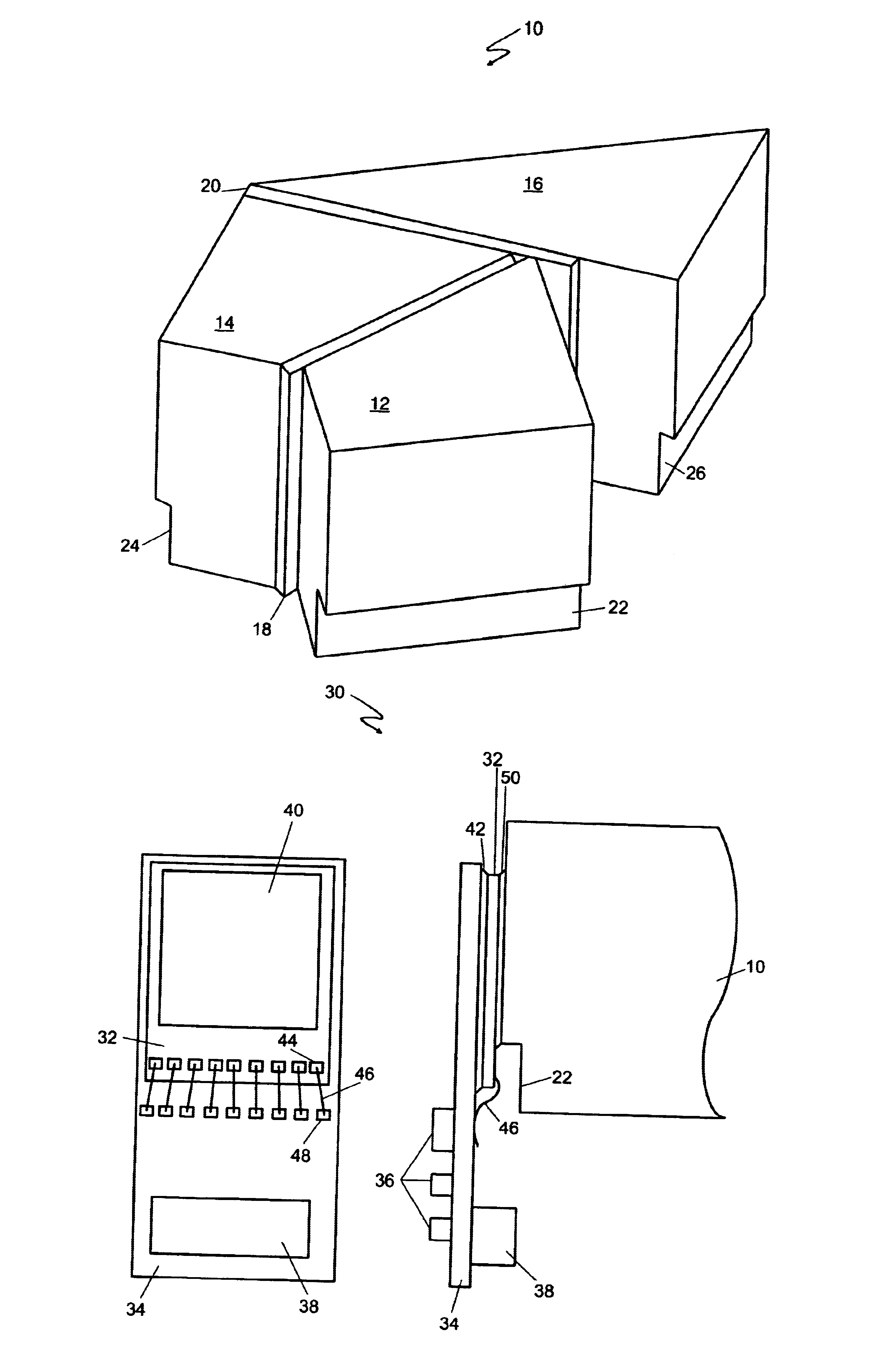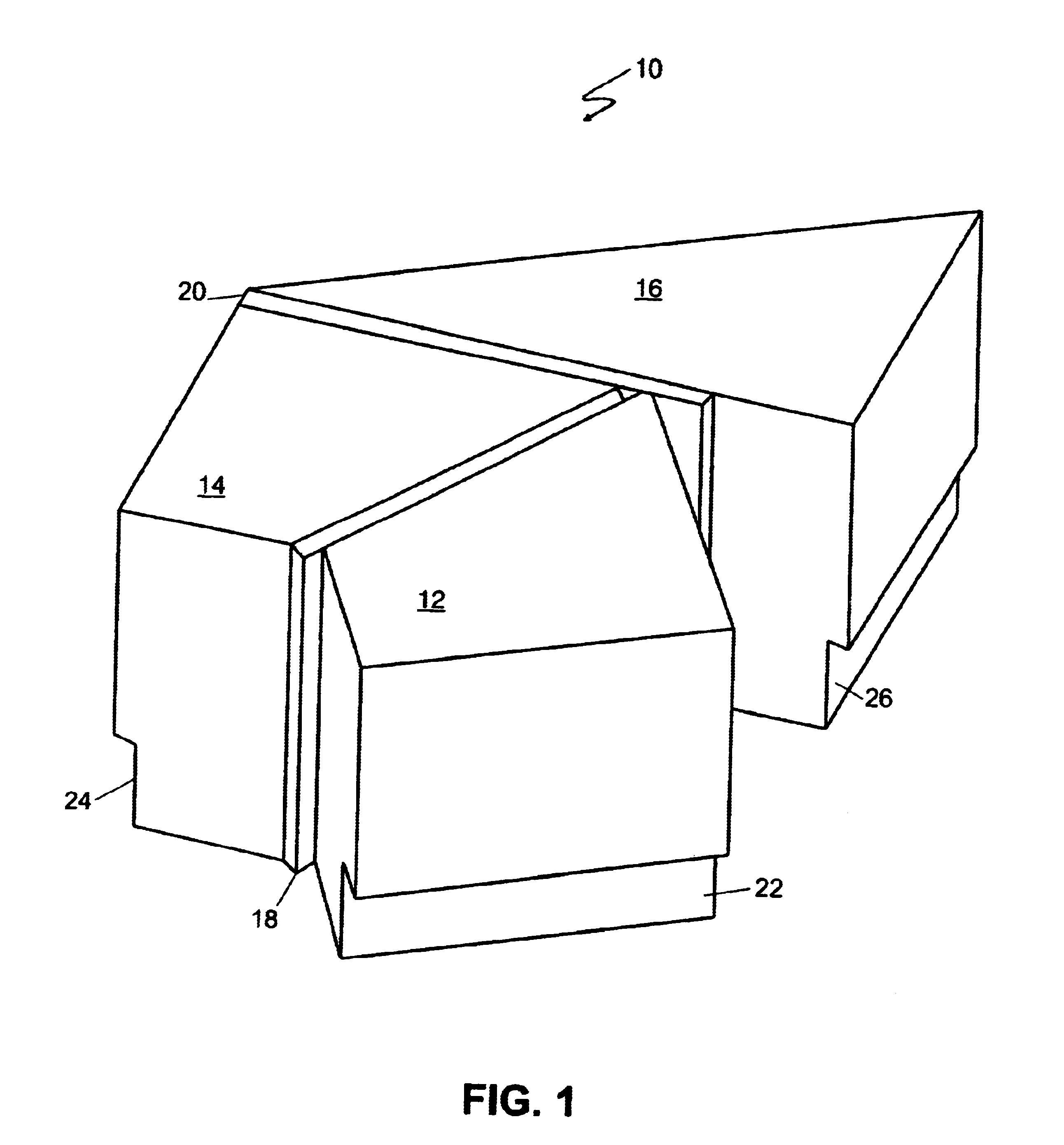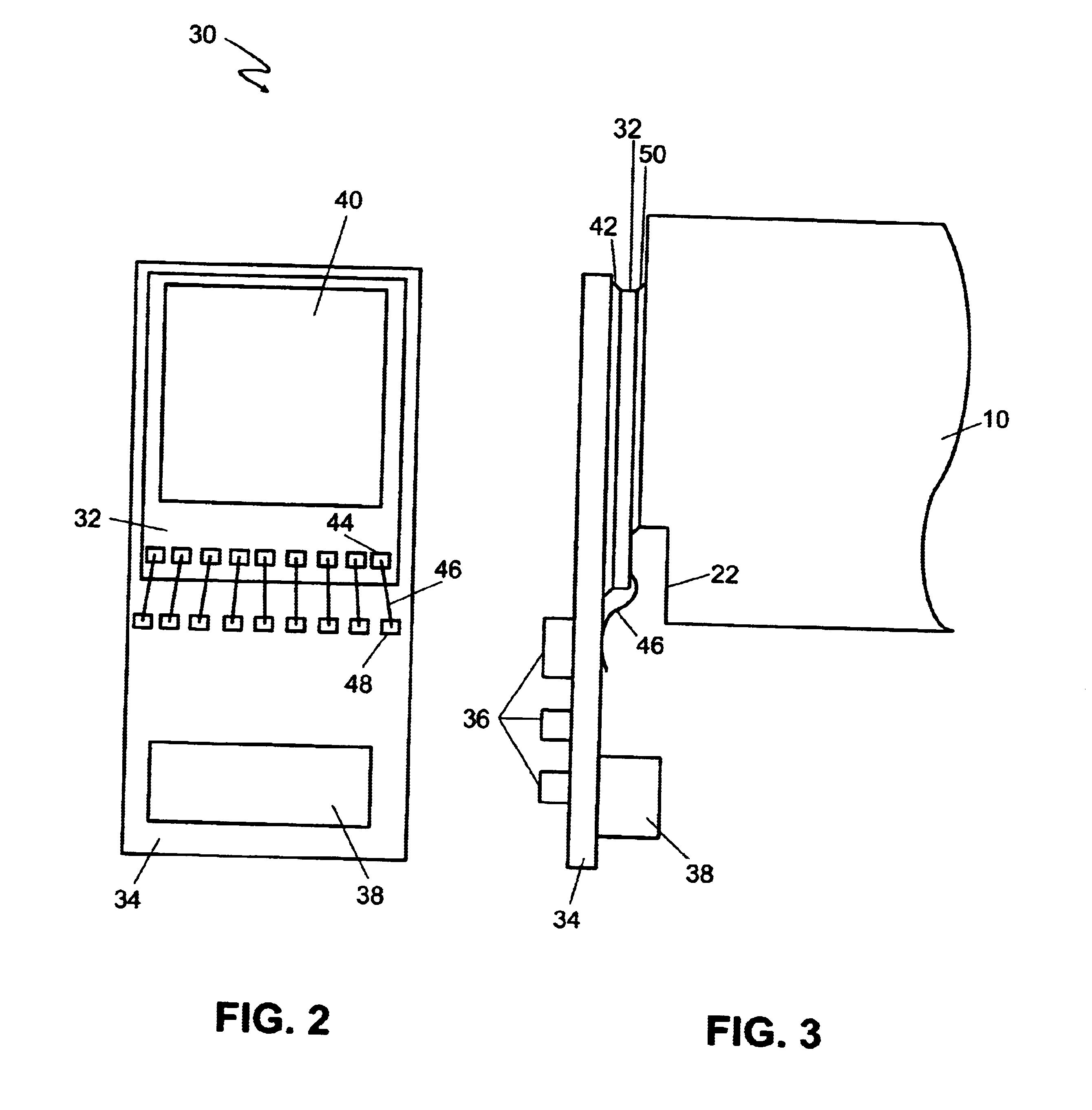Color separation prisms having solid-state imagers mounted thereon and camera employing same
- Summary
- Abstract
- Description
- Claims
- Application Information
AI Technical Summary
Benefits of technology
Problems solved by technology
Method used
Image
Examples
Embodiment Construction
Persons of ordinary skill in the art will realize that the following description of the present invention is illustrative only and not in any way limiting. Other embodiments of the invention will readily suggest themselves to such skilled persons having the benefit of this disclosure.
The present invention will work with many color-separation prism designs. Non-exhaustive examples include the prism assembly disclosed in U.S. Pat. No. 5,644,432, the prism assembly disclosed in U.S. Pat. No. 3,659,918, the prism assembly disclosed in U.S. Pat. No. 4,009,941, the prism assembly disclosed in U.S. Pat. No. 4,072,405, the prism assembly disclosed in U.S. Pat. No. 4,035,836, and the prism assembly disclosed in the article H. de Lang and B. Bouwhuis "Colour Separation in Colour-Television Cameras" Phillips Technical Review, vol. 24, no. 9, pp. 263-298, August 1963.
Referring first to FIG. 1, an isometric drawing of an illustrative color-separating prism 10 that may be used in the present inve...
PUM
 Login to View More
Login to View More Abstract
Description
Claims
Application Information
 Login to View More
Login to View More - R&D
- Intellectual Property
- Life Sciences
- Materials
- Tech Scout
- Unparalleled Data Quality
- Higher Quality Content
- 60% Fewer Hallucinations
Browse by: Latest US Patents, China's latest patents, Technical Efficacy Thesaurus, Application Domain, Technology Topic, Popular Technical Reports.
© 2025 PatSnap. All rights reserved.Legal|Privacy policy|Modern Slavery Act Transparency Statement|Sitemap|About US| Contact US: help@patsnap.com



